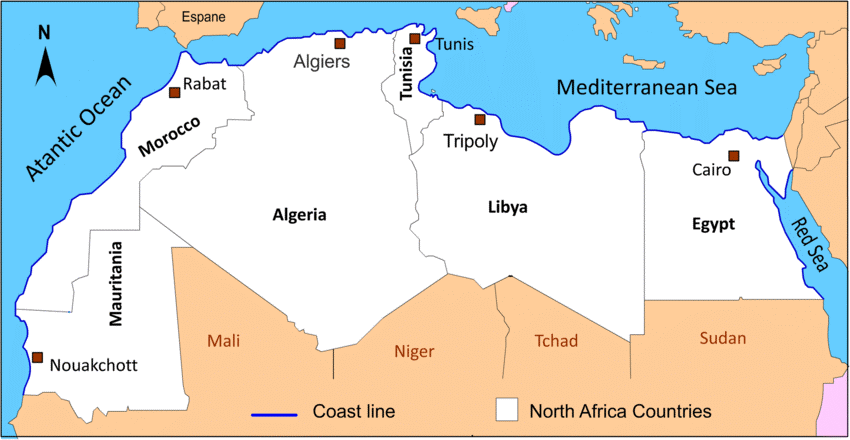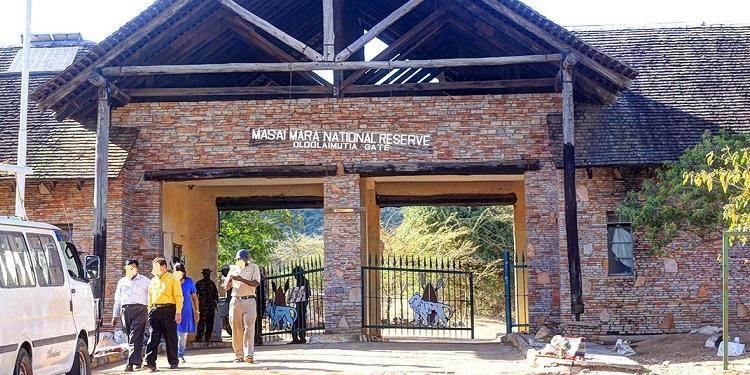Location
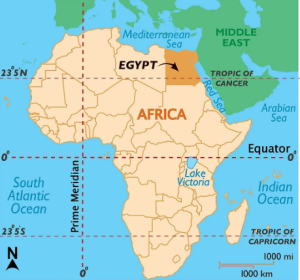
Egypt occupies part of the northeastern corner of Africa and borders the Red Sea, the Gulf of Aqaba, the Gulf of Suez to the east, and the Mediterranean Sea to the north. Egypt’s eastern portion, the Sinai Peninsula rests in Western Asia in the Middle East. It should be noted that the country shares international borders with Sudan, Libya, Israel, and the Gaza Strip of the occupied Palestinian territory. Other countries like Turkey, Saudi Arabia, Greece, Cyprus and Jordan share maritime borders with Egypt. For a long time, Egypt was colonized by Great Britain, and only attained her independence in 1922 to become the Modern Egypt known today. In 1961, the United Arab Republic was formed from Egypt’s unison with Syria. Today, this republic covers 1-million-meter kilometers, which is estimated to be twice the size of the United States, California or France.
Population
Sources indicate that Egypt’s population as of 2021 was 102 million. The capital city, Cairo, has a total population of 20 million people. The majority of the people in the country speak Modern Standard Arabic, while the Egyptian-Arabic dialect is treated as the colloquial language. While most residents subscribe to Sunni Islam (80- 90%), there are still Coptic Christians in Egypt (20- 10%).
Egypt is termed as the most populated Arab country, mostly attributed to its geographical features. A better part of the country’s population is distributed along the River Nile’s delta, its fertile valley, the northern side of the Red Sea Coast and the Mediterranean’s coastal plains. As such, all major cities in Egypt are situated along the Nile valley, except the few located near the coast (AbouKorin, 2018). Other parts of the country are sparsely populated and inhabited by deserts. Egypt is highly dependent on the Upper Nile for its fertile alluvial plains. The human transition and evolution from hunting and gathering to the domestication of animals and foods began from this point.
Government & Independence

Egypt has been governed according to a number of different constitutions throughout its history, both as a monarchy and, beginning in 1952, as a republic. The first of them was the 1923 confederation, which was ratified shortly after Egypt gained its independence from Britain. It was also the most liberal of the constitutions (Milik, 2021). This manifesto created the political and cultural foundation for modern Egypt, proclaiming it to be an independent, sovereign Islamic state with Arabic as its official language. This document is credited with laying the foundations for contemporary Egypt. All adult men were eligible to cast a vote in this election. This constitution established a legislature with two chambers, a separate and impartial judicial system, and a powerful executive branch in the shape of the monarch. In 1930, this constitution was overthrown and replaced by a new one, which granted the monarch and his ministers an even greater amount of authority. It wasn’t until after five years of strenuous resistance that it was finally overturned. The constitution from 1923 was reinstated into effect, although it was ultimately overthrown by the revolution that took place in 1952. In 1953, the declaration of Egypt’s independence became official (El-Ashmouni & Salama, 2022).
Language
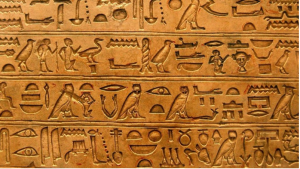
The most widely spoken language in Egypt is the modern standard Arabic. There are also other 16 languages like the Bedawi, Nobiin, Siwi and Mattokki. French, Italian and English are also spoken by immigrants.
Climate
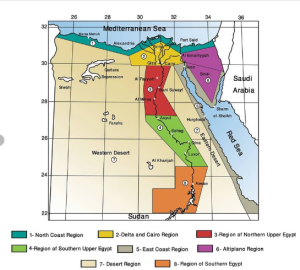
The majority of Egypt is covered in desert, which contributes to its arid and scorching environment. It features a warm winter season with rain falling in coastal regions, and a hot summer season that is characterized by a lack of precipitation (Goma & Phillips, 2022). Temperatures throughout the day shift depending on the season and the prevailing wind direction. Readings in the coastal areas vary from an average low of 14 degrees Celsius during the winter months to an average high of 30 degrees Celsius during the summer months. Variables in the interior desert regions swing greatly, particularly during the summer, when they may be as low as 7 degrees Celsius at night and as high as 43 degrees Celsius during the day. During the winter, the temperature range in the desert is more stable, although it may be as low as 0 degrees Celsius at night and as high as 18 degrees Celsius during the day (Goma & Phillips, 2022). Egypt is also susceptible to scorching wind storms known as “khamsin,” which transport sand and dust and move over the northernmost coast of Africa. These storms are recognized for their name. These khamsin storms normally take place between the months of March and May and have the potential to raise the temperature by 20 degrees Celsius in only two hours. They also have the potential to linger for many days (Goma & Phillips, 2022).
History
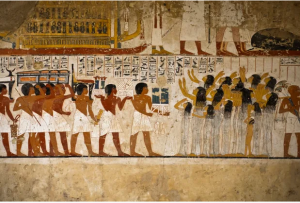
Egypt’s origin dates back to the 6th and 4th millennium BCE. The country’s history is rich in dynasties and local kingdoms which ruled from 3100 BCE to 1080 BCE. In between, other foreign dominations were established in the country, such as Nubian, Libyan and Assyrian. The Achaemenid Persians were the highlight of the 6th century BCE when they took Egypt and became the only foreign rulers aptly crowned Pharaohs. The expanding powers of Alexander the Great brought Egypt under the Ptolemic dominion, placing Alexandria as the primary Hellenistic trade and culture center.
Centuries later, the Byzantine Empire and Romans were placed in charge of Egypt until the Arabs came into the picture in the 7th century. The great city of Cairo, founded in 986, together with the entire Islamized Egypt, was controlled by the British powers and Ottoman Turks until 1922, when the country gained independence.

